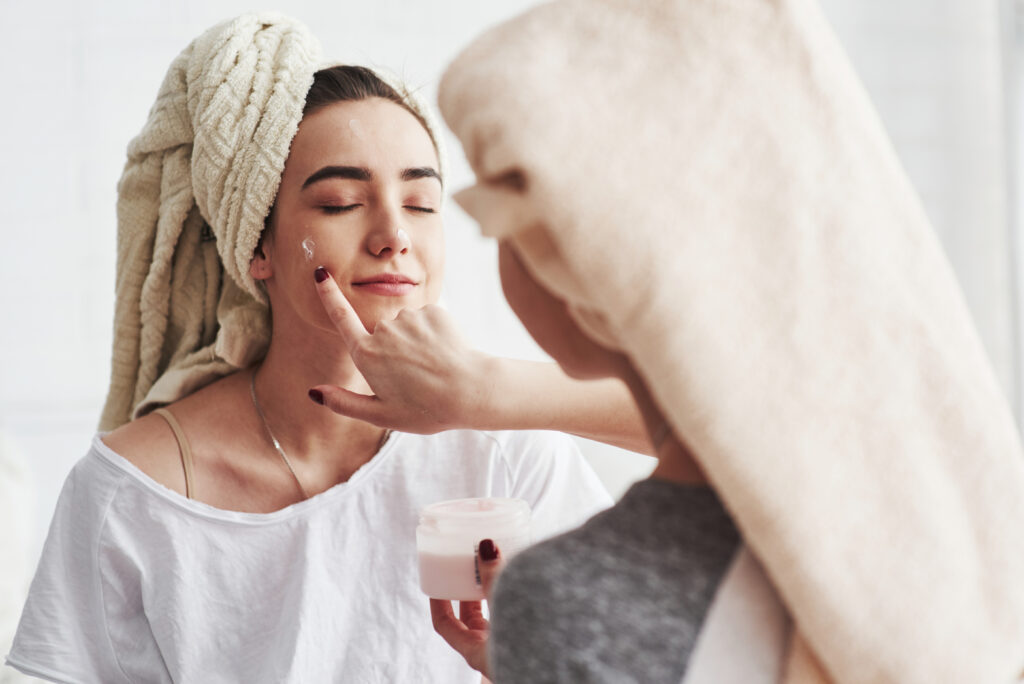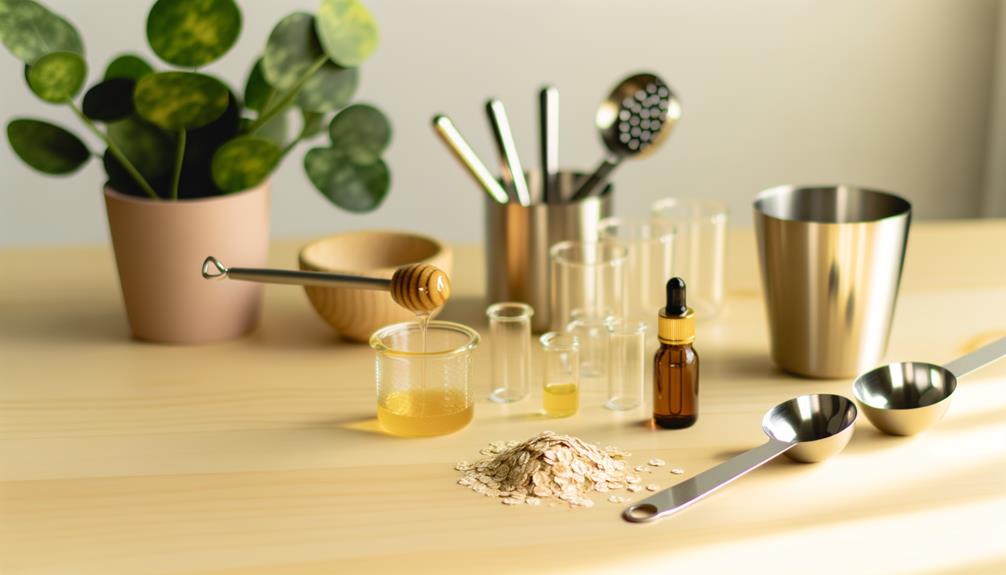This guide will show you how to apply face oil to get the best results for your skin. You can simplify your skincare routine by adding face oil, which can improve hydration, reduce fine lines, soothe irritation, and give your skin a healthy glow. Whether you’re new to using face oils or want to improve your technique, this article will give you essential tips for getting the best results. Get ready to improve your skincare routine with the secrets of using face oil.
Table of Contents
ToggleWhat Is A Face Oil?
A face oil is a skincare product that hydrates and nourishes the skin. It’s made from natural oils like jojoba, argan, or rose hip oil, which are rich in vitamins and fatty acids. Face oils moisturize the skin, improve its texture, and protect it from environmental damage. To use a face oil, apply it after cleansing and toning, and before other moisturizers or treatments. Gently massage a small amount into the skin using upward motions, focusing on areas that need extra hydration.
Why Do You Need To Use Face Oil?
It has essential fatty acids and antioxidants that nourish and hydrate the skin. It also protects the skin from environmental stress and reduces signs of aging like fine lines and wrinkles. Face oil can balance the skin’s natural oil production, making it good for oily and dry skin. It improves the skin’s texture and appearance, making it look radiant and healthy. Adding face oil to your skincare routine can boost hydration and keep your skin glowing.
Best Ingredients To Look For In Face Oil
When you’re searching for the best ingredients in a face oil, focus on finding ones that have lots of antioxidants and essential fatty acids. Antioxidants like vitamin E, vitamin C, and green tea extract can protect your skin from damage and aging. Essential fatty acids such as omega-3 and omega-6 can nourish and hydrate your skin, keeping it healthy. These oils moisturize and reduce inflammation, keeping your skin smooth and soft. Choose face oils without synthetic fragrances or harsh chemicals to avoid irritation or sensitivities.
Dr. Kinsella Premium Glow Oil
Dr. Kinsella Premium Glow Oil is a popular skincare product that hydrates and nourishes the skin. It has high-quality ingredients like vitamin E, jojoba oil, and rose hip oil. The oil aims to improve skin texture and make the skin look healthy and radiant. Users like that it’s not greasy and works for all skin types. Many people use it every day to help with dryness, dullness, and uneven skin tone. You can use the oil as a moisturizer or mix it with a foundation for a dewy finish. Using it regularly can make your skin glow and keep it hydrated.
When To Apply Face Oil?
You should put face oil on after cleaning and toning your skin. This helps the oil soak in better and keeps your skin moist. Many people like to use face oil at night to fix and feed their skin while they sleep. If your skin is dry or lacking water, you might want to use face oil in the morning and at night. But if your skin is oily or prone to acne, you should use face oil carefully or pick a lighter kind to avoid clogging your pores. The right time to use face oil depends on what your skin needs and what you like.
How To Apply Facial Oil
If you’re unsure about the correct way how to use face oil, here are detailed instructions to guide you through the process.
Cleanse Your Skin
You should put face oil on after cleaning and toning your skin. This helps the oil soak in better and keeps your skin moist. Many people like to use face oil at night to fix and feed their skin while they sleep. If your skin is dry or lacking water, you might want to use face oil in the morning and at night. But if your skin is oily or prone to acne, you should use face oil carefully or pick a lighter kind to avoid clogging your pores. The right time to use face oil depends on what your skin needs and what you like.
Combine Oil With A Moisturiser
Mixing oil with moisturizer can improve skin hydration and nourishment. It’s important to test the combination on a small area first to avoid any negative reactions. Using too much oil with a moisturizer can make the skin feel greasy, so start with a small amount and adjust as needed. Overall, combining oil with moisturizer can be a helpful addition to your skincare routine, providing extra nourishment and hydration for your skin.
Use The ‘Patting’ Technique When Applying Oil
The patting technique is a gentle and effective way to apply oil to your skin. Instead of rubbing the oil in, gently pat it onto your skin using your fingertips. This helps to distribute the oil evenly and prevents tugging or pulling on the skin, which can lead to irritation. Using the patting technique can also help the oil absorb into your skin better. The gentle tapping motion stimulates blood flow and helps the oil penetrate deeper into the skin, providing maximum hydration and nourishment.
Massage The Oil Into The Skin
When you massage oil into your skin, use gentle, circular motions to make sure it spreads evenly and absorbs well. Start with a little oil and add more as needed, focusing on dry areas. This can improve circulation, help you relax, and maximize the oil’s benefits. Choose an oil that works for your skin type and what you like. For instance, coconut oil is good for moisturizing, while jojoba oil is similar to your skin’s natural oils. Massaging the oil into your skin can nourish, hydrate, and create a soothing self-care routine.
Don’t Mix Face Oil With SPF
When you massage oil into your skin, use gentle, circular motions to make sure it spreads evenly and absorbs well. Start with a little oil and add more as required, focusing on dry areas. This can improve circulation, help you relax, and maximize the oil’s benefits. Decide an oil that works for your skin type and what you like. For instance, coconut oil is good for moisturizing, while jojoba oil is similar to your skin’s natural oils. Massaging the oil into your skin can nourish, hydrate, and create a soothing self-care routine.
Use Oil Every Morning And Night
Using oil in the morning and at night can help your skin. In the morning, a light oil can protect your skin from pollution and keep it moisturized all day. At night, a richer oil can help repair and rejuvenate your skin while you sleep. When choosing an oil, consider your skin type and concerns. For example, people with dry skin may benefit from heavier oils like argan or avocado oil, while those with oily or acne-prone skin may prefer lighter options like jojoba or grapeseed oil. It’s important to do a patch test before using any new product to make sure it works well with your skin. Adding oil to your skincare routine can nourish and protect your skin for a healthy, glowing look.
Store Face Oil Correctly
To store face oil properly, keep it in a cool, dark place away from sunlight and heat. Light and high temperatures can make the oil less effective. Store it in a cabinet, drawer, or the refrigerator, especially if you live in a warm place.
How To Apply Face Oil Tips For Different Skin Types
When choosing face oil, consider your skin type. If you have dry skin, use heavier oils like argan or marula oil for deep hydration and nourishment.
Dry Skin
If you have dry skin, using face oil can help your skin. After cleaning and toning your skin, use a serum and then face oil to keep your skin moist. Mix 4-6 drops of oil with your night cream and put it on your face and neck for extra moisture. Also, put 4-5 drops of oil on top of your cream to lock in moisture and nourish your skin. Trying different oils and finding the right mix for your skin is important for the best results.
Normal Skin
For normal skin, using a light, non-clogging face oil can help keep it balanced. Oils like jojoba, argan, or squalane are good choices. Applying a few drops after washing and before moisturizing can add extra moisture and nourishment. It’s important to test new oils on a small area first. Oils with antioxidants like rosehip or grapeseed can protect the skin and keep it looking young. Choosing the right oil for your skin can make it healthier and more radiant.
Oily/Combination Skin
For oily combination skin, choose a lightweight, non-comedogenic face oil like jojoba, grapeseed, or rosehip seed oil. These oils have a low comedogenic rating and can balance natural oil production. They are also rich in antioxidants and vitamins to nourish the skin without causing excess shine. When applying face oil, use a small amount and focus on drier areas like the cheeks or around the eyes.
Avoid applying too much oil to the T-zone to prevent making it oilier. Consider using face oils with tea tree oil or salicylic acid to control excess sebum production and minimize breakouts. Always patch-test new oils before using them regularly to avoid adverse reactions.
Using Face Oil During Travel
Using face oil during travel can be a great way to keep your skin hydrated and nourished, especially in dry or air-conditioned environments. Face oils create a protective barrier on the skin, helping to prevent moisture loss and maintain a healthy complexion. When choosing a face oil for travel, look for lightweight and non-greasy formulas that are easily absorbed into the skin.
Conclusion
Adding face oil to your skincare routine can benefit your skin in many ways. By deciding the right oil for your skin type and using it correctly, you can nourish and hydrate your skin, prevent early aging, and promote a healthy complexion. Start with clean skin and use a few drops of oil to avoid clogging pores or causing greasiness. With regular use and proper technique, you can fully benefit from face oils for a radiant, rejuvenated complexion. Experiment with different oils and methods to find what works best for you, and enjoy the positive results on your skin.
FAQs
Do you put face oil on before or after moisturiser?
Applying face oil can be a great way to nourish and hydrate your skin, but it’s important to use the right technique to maximize its benefits. Start by cleansing your face thoroughly to remove any dirt or makeup. Then, apply a few drops of face oil onto your fingertips and gently press it into your skin, focusing on areas that tend to be drier or more prone to fine lines.
How to use facial oil?
Facial oils can be used as part of your skincare routine to provide hydration and nourishment to the skin. They are particularly beneficial for those with dry skin, as the oils help to lock in moisture and prevent water loss from the skin.
Do you put on face oil before or after cleanser?
After you clean your skin, apply face oil to lock in moisture and nourish your skin. Cleanse your skin to remove dirt, impurities, and makeup so the face oil can be absorbed better. After cleansing, pat your skin dry with a towel and apply a few drops of face oil to your fingertips. Gently massage the oil into your skin using upward motions, focusing on areas that need extra hydration. This will help seal in moisture and leave your skin feeling soft and supple.
Do you put on face oil before or after sunscreen?
It’s generally recommended to apply face oil before applying sunscreen. Face oils can act as a moisturizing barrier between your skin and the sunscreen, helping to lock in moisture and provide an additional layer of protection. Applying face oil first allows it to be absorbed into the skin before applying sunscreen, ensuring that the sunscreen can be evenly distributed and effectively protect your skin from UV rays.







